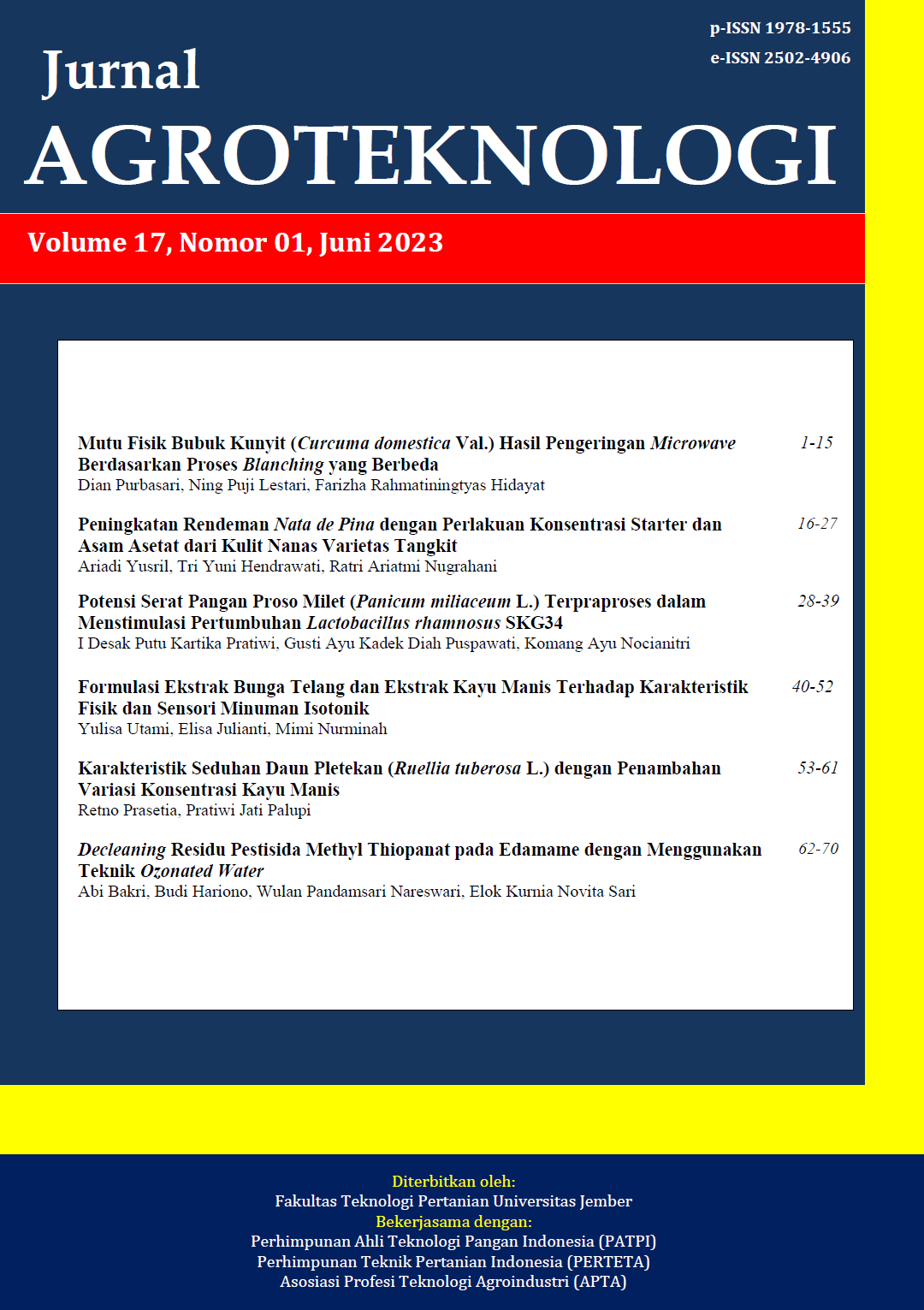Formulasi Ekstrak Bunga Telang dan Ekstrak Kayu Manis Terhadap Karakteristik Fisik dan Sensori Minuman Isotonik
DOI:
https://doi.org/10.19184/j-agt.v17i01.30140Abstract
Bottled drinking water is one of the beverage industries that dominate the soft drink market in Indonesia. An isotonic drink is bottled drinking water with an osmolality content similar to body fluids to replace lost body fluids after activities. This research aimed to develop and innovate isotonic drinks, based on local commodities such as butterfly pea and cinnamon with good quality and unique characteristics, so that can increase consumer interest in isotonic drinks. This study used a non-factorial Completely Randomized Design (CRD) method consisting of 6 levels (ratio of butterfly pea extract and cinnamon extract) i.e., P1 (80%:20%), P2 (70%:30%), P3 (60%:40%), P4 (50%:50%), P5 (100%:0%), dan P6 (0%:100%). The analysis includes viscosity, color index, and sensory analysis (color, taste, viscosity, and general acceptance). The results showed that the comparison formulation of butterfly pea extract and cinnamon extract had a very significant effect (P<0,01) on the physical and sensory characteristics of isotonic drinks. The value of the color index (˚Hue) range of 298.8–307.0, viscosity value range of 4.78–6.88%, and hedonic organoleptic, i.e. color range of 4.990–6.434, aroma range of 4.568–6.242, taste range of 4.550–6.360, the hedonic value of viscosity range of 4.910–5.876, and general acceptance range of 4.942–6.240. The best results of the isotonic drink was P1 (ratio of butterfly pea extract and cinnamon extract of 80%:20%) which produced the highest hedonic value and the physical characteristics. So, the butterfly pea and cinnamon extract can be made as a combination of an isotonic drink innovation.
Keywords: butterfly pea extract, cinnamon extract, isotonic drink
Downloads
Downloads
Published
Issue
Section
License
Jurnal Agroteknologi has CC-BY-SA or an equivalent license as the optimal license for the publication, distribution, use, and reuse of scholarly work. Authors who publish with this journal retain copyright and grant the journal the right of first publication with the work simultaneously licensed under a Creative Commons Attribution-ShareAlike 4.0 International License that allows others to share the work with an acknowledgment of the work's authorship and initial publication in this journal.
 JURNAL AGROTEKNOLOGI
JURNAL AGROTEKNOLOGI 








.png)
